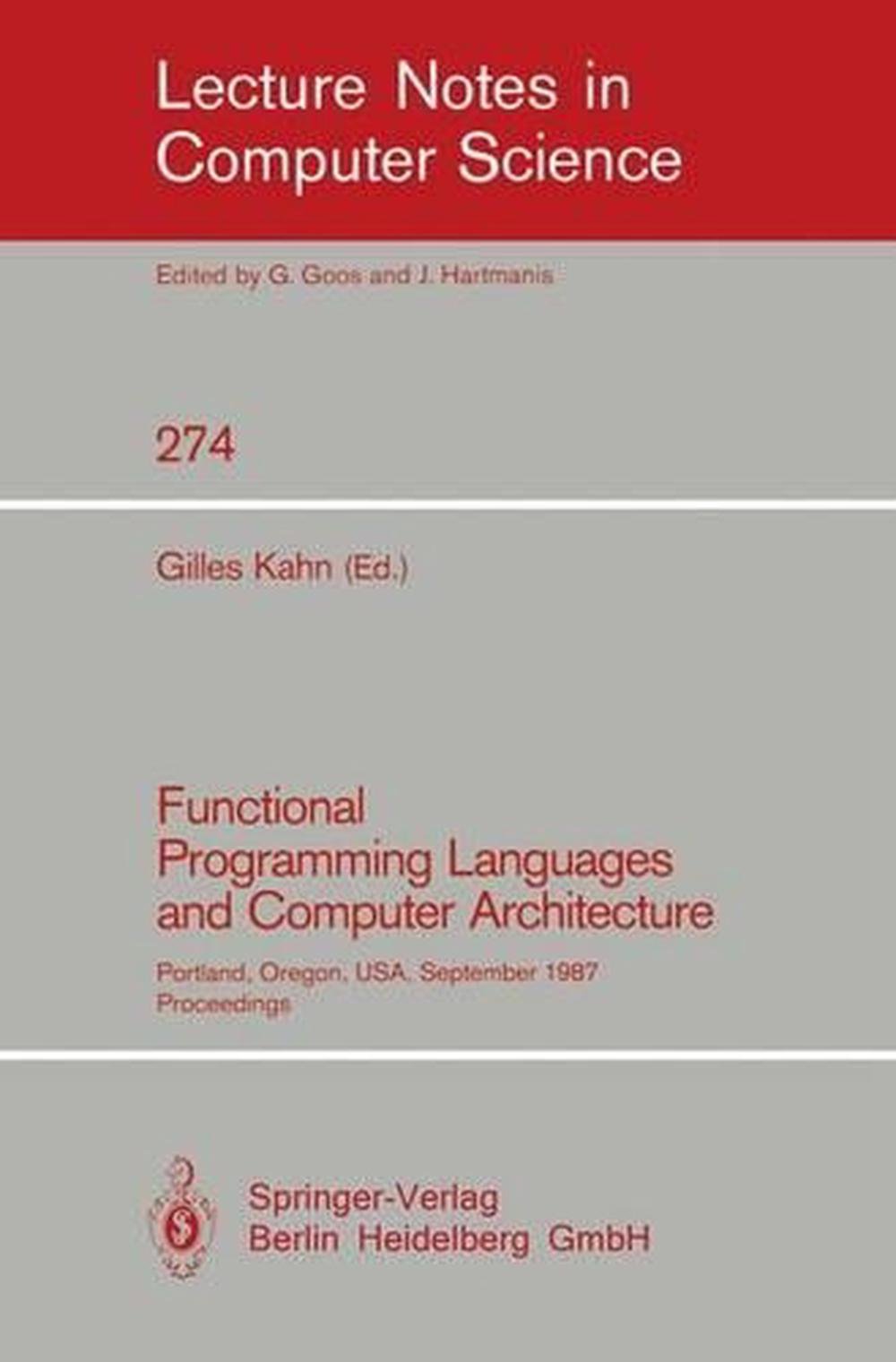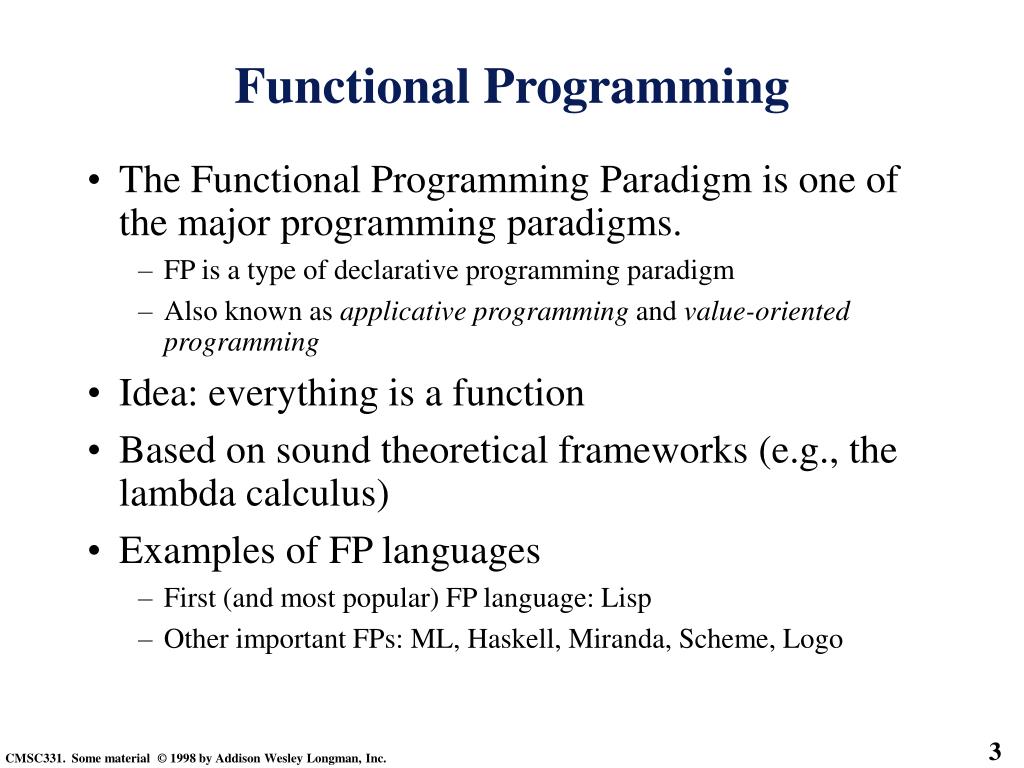
Functional programming languages how to#
Lists of functions shows how to put functions in a list, and explains why you might care. A closure can access its own arguments, and variables defined in its parent.

Motivation motivates functional programming using a common problem: cleaning and summarising data before serious analysis.Īnonymous functions shows you a side of functions that you might not have known about: you can use functions without giving them a name.Ĭlosures introduces the closure, a function written by another function. The discussion of functional programming continues in the following two chapters: functionals explores functions that take functions as arguments and return vectors as output, and function operators explores functions that take functions as input and return them as output. This is a recurring theme in FP: start with small, easy-to-understand building blocks, combine them into more complex structures, and apply them with confidence. These pieces are twined together in the conclusion which shows how to build a suite of tools for numerical integration, starting from very simple primitives. Then you’ll learn about the three building blocks of functional programming: anonymous functions, closures (functions written by functions), and lists of functions. The chapter starts by showing a motivating example, removing redundancy and duplication in code used to clean and summarise data. You can do anything with functions that you can do with vectors: you can assign them to variables, store them in lists, pass them as arguments to other functions, create them inside functions, and even return them as the result of a function.

In particular, R has what’s known as first class functions. This means that it provides many tools for the creation and manipulation of functions. R, at its heart, is a functional programming (FP) language. You’re reading the first edition of Advanced R for the latest on this topic, see the Functional programming section in the second edition.


 0 kommentar(er)
0 kommentar(er)
